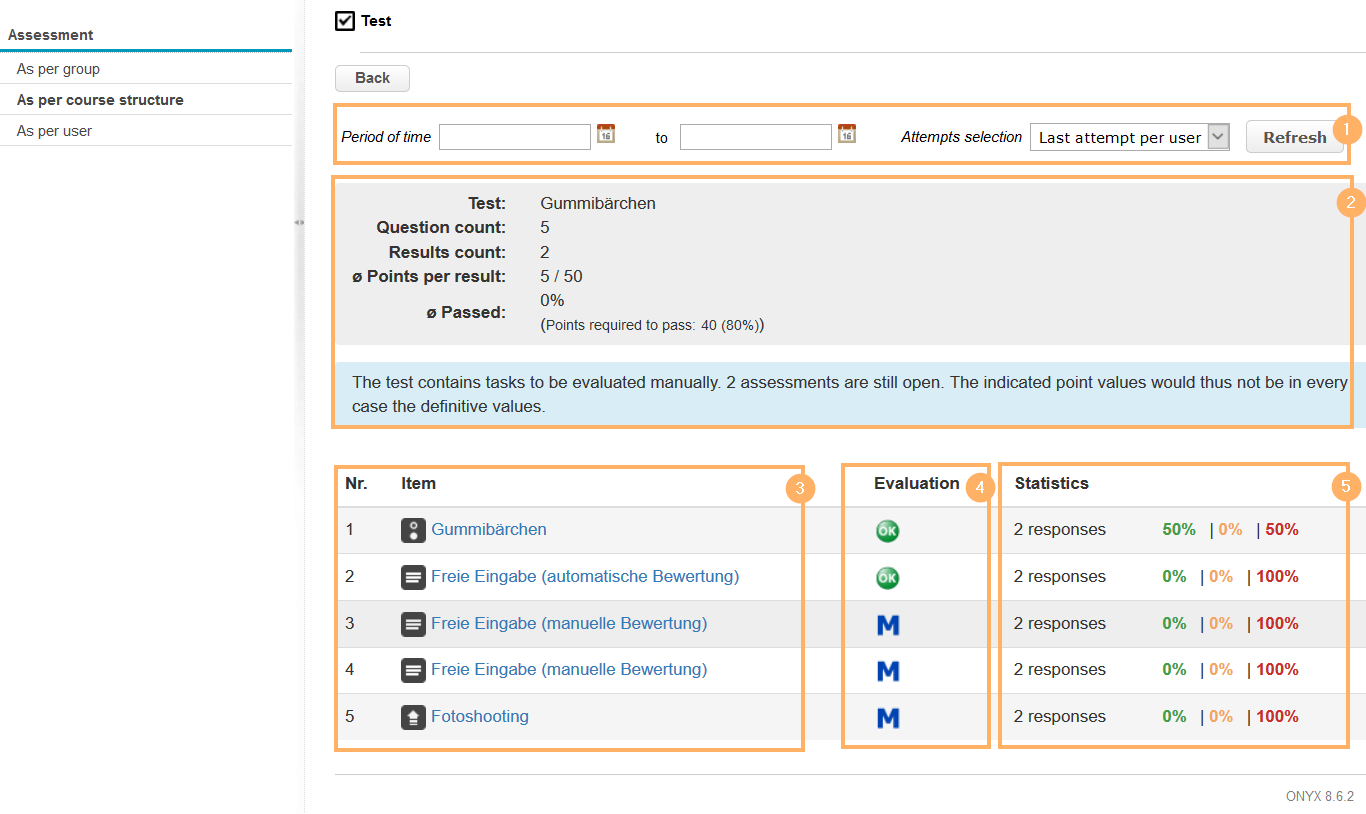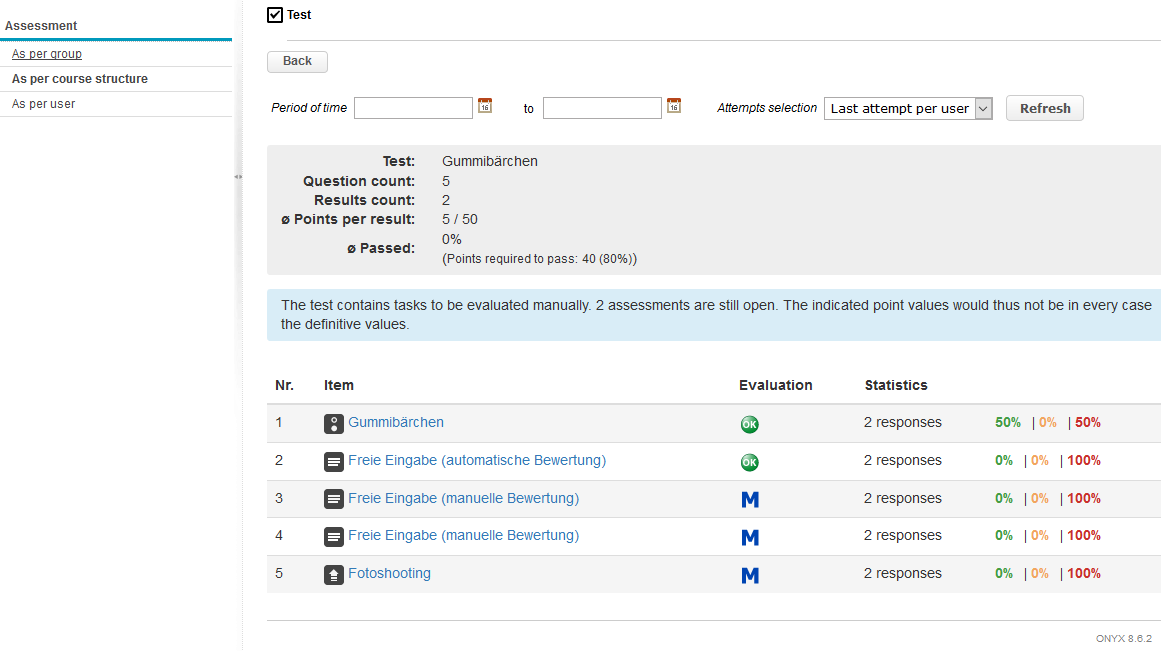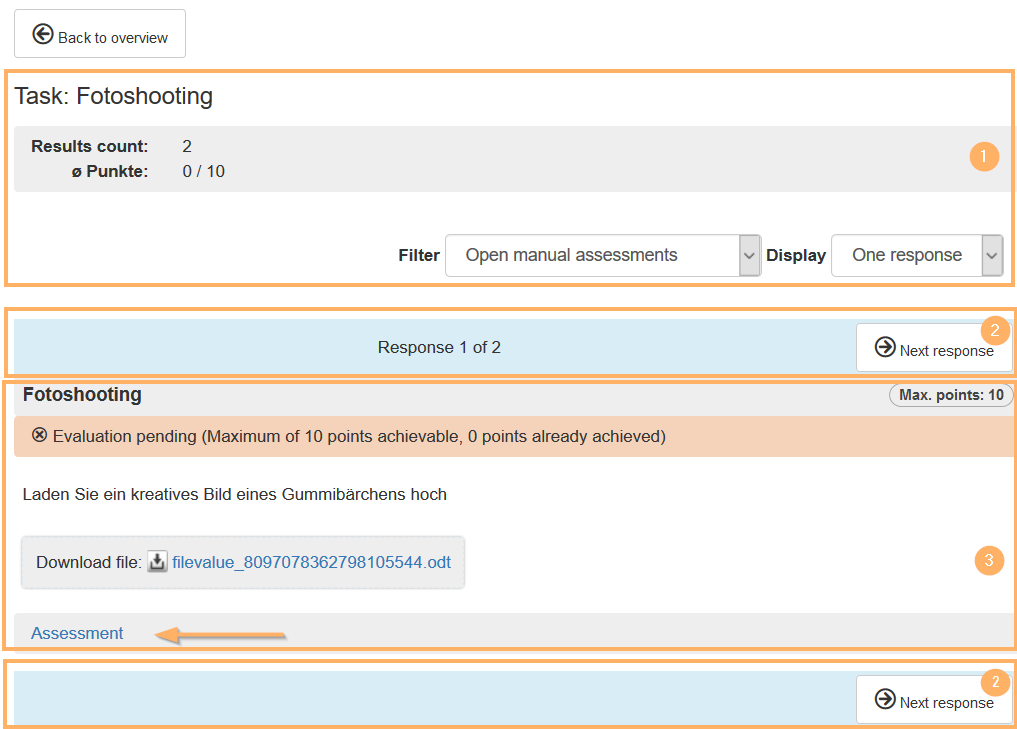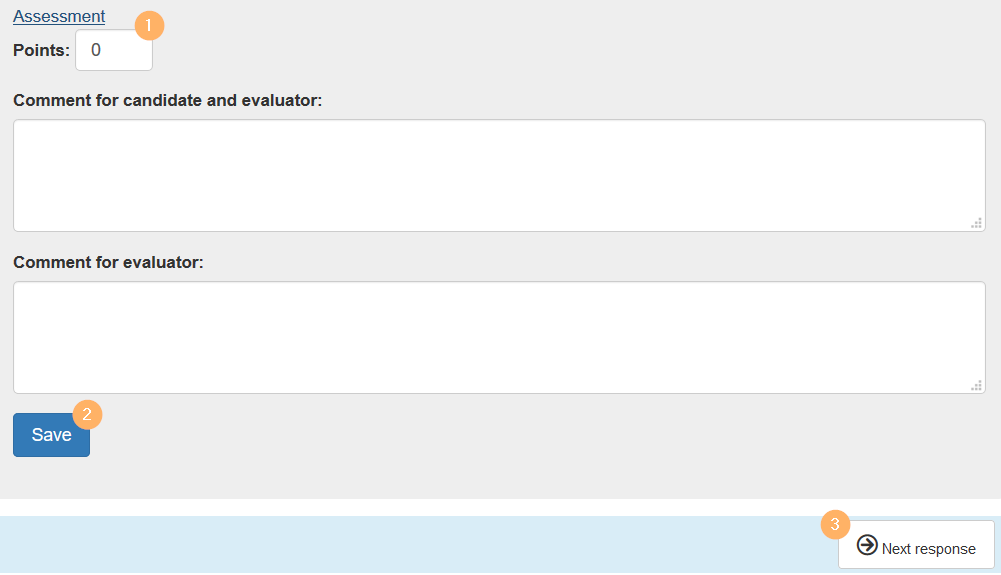Anonymous and Question-based Assessment of ONYX Test Questions
Anonymous and question-based assessment of ONYX test questions
For an anonymised and question-related assessment, a special assessment view is provided. In the first step, the question to be assessed is selected, and then all participant responses are displayed in an anonymised way. The assessor can use filter settings to configure whether all answers, only answers with open assessments and/or incorrect answers should be shown.
- Step 1: Open overview of all test results
- Step 2: Open detailed view of a question
- Step 3: Perform assessment
Step 1: Open overview of all test results
To assess question solutions of several users manually, first open the overview of all test results of a course element, which also includes a list of all test questions.

Step 2: Open detailed view of a question
In this overview, you can select any question by clicking on the question title. This will open the detailed view of the question and the corresponding answers of the participants will be shown in random order.
If necessary, you can also restrict the number and display of answers using filters.

Step 3: Perform assessment
Start the manual assessment or reassessment by clicking on the Assessment link at the bottom of the page. The assessment area will open below the participant response.
To perform an assessment, proceed as follows:
1 | Enter the score achieved and fill in the comment fields for the assessment if necessary. |
|
2 | Click on Save to store the assessment of the participant’s response. | |
3 | Navigate to the next participant response. The answer will open up automatically so that you can directly carry out the next assessment. Like this, you can assess all of the participant responses one after the other. Make sure to save each assessment. |





